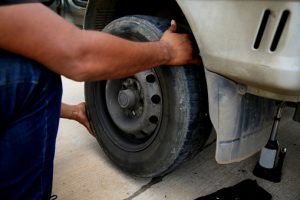Due to its high energy consumption, compressed air is sometimes referred to as the fourth utility (after electricity, water, and gas). Over 70% of the electricity used to operate compressed air systems is ultimately converted to waste heat. Despite being ineffective, compressed air systems—along with steam systems—are crucial in many manufacturing, healthcare, and other situations because they give force without the danger of starting a fire.
A typical compressed air system is depicted below. Most compressors reduce 7 ft3 to 1 ft3, which results in extremely high humidity. Before being used, compressed air is dried or filtered using the majority of the equipment downstream. Leaks invariably occur due to the quantity of piping and tanks, making the compressor work harder.

Users might not be aware of the expense of compressed air delivery. I’ve witnessed spitball fights and employees using compressed air to wash the floor in numerous industries. Teach your staff to use compressed air responsibly.
Techniques for Cutting the Energy Use of Air Compressors
What can regular users do to lessen the energy that air compressors use? TLV suggests carrying out the following actions.
- Schedule the operation of the air compressor.
- Determine the times when the compressor can be turned off.
- Eliminate leaks in the current system.
- Smaller leaks must be found using ultrasonic leak detecting technology; larger leaks will be audible.
- Check to see if the spray pressure may be lowered.
An air compressor can use between 4% and 5% less electrical power with a spray pressure reduction of 0.1 MPA (1 bar, 15 psi) (depending on the type of air compressor and number of years in use). This decrease in pressure may also result in less compressed air being lost due to unrepaired leaks.
Air supply should be colder.
For instance, the energy consumption of the air compressor can be decreased by 3% by using 10 °C (50 °F) air from the outside of the facility rather than 30 °C (86 °F) air from inside.
Maintain regular filter cleanings.
Energy usage can be decreased by 1% by cleaning filters and lowering supply resistance to the air compressor to below 200mmAq (8 inH2O).
Utilize TLV air traps and separators that are made to collect moisture and preserve air to improve the drainage of condensate from air systems.
One of the most important jobs of compressed air systems is to remove moisture to safeguard items and equipment. When blowdown valves are left open or timer-based systems are not set up to match seasonal moisture loads, this crucial task is frequently performed inefficiently.
TLV air traps automatically regulate to continually remove moisture and stop needless compressed air loss. Similar to this, TLV’s high-efficiency, super cyclonic separators continually remove moisture from the air and can provide high-quality air that is up to 99.8% dry.
Boost Maintenance and Controls
Many components make up a compressed air system. It’s crucial to keep them optimized and maintained. For instance, we previously looked at a system that was releasing pressurized air into the air because a safety valve in the control system was set too low. You have a lot of opportunities to explore, including ways to improve efficiency through sequencing, modulation, and other means.
Depending on your region, you may be able to reduce the temperature of the compressor’s intake air to help it operate more efficiently. You can use outside air for your compressor intake in regions that are frequently cold and dry, such as North Dakota and Colorado. Based on a 70 degree inlet air temperature, you will save around 3.8% if you can lower the temperature by 20 degrees Fahrenheit. Some estimations of the probabilities are given in the table below.
The number of unloaded running hours
An industrial compressed air system often experiences variable air demand. Compressor controllers provide simple methods for cutting down on unloaded running time. The majority of on-board machine controllers offer customizable start/stop timings as a feature. After hours, compressors can continue to use up to 25% of the energy they would have used at full load. Additionally, if there are system leaks, the compressors may occasionally convert to loaded running, using even more energy.
The more money that can be saved by turning off compressors rather than having them run unloaded, the shorter the production time. Isolating the factory’s non-operational portions is a possibility if production is decreased, but not ceased.

Cut back on the pressure band
For the majority of compressors, it is generally accepted that a pressure decrease of 1 bar (14.5 psi) might result in an electricity consumption reduction of 7%. The compressor’s pressure settings should be changed until the lowest pressure is possible, then the pressure band should be narrowed without compromising the applications.
Additionally, the controller can be used by manufacturers to manually or automatically construct two distinct pressure bands to optimize energy use throughout various time periods, significantly lowering energy expenditures during low-use periods. Besides, lowering system pressure lessens the effects of leakage. Air leaks have a 1 bar pressure reduction’s 13% reduction in impact.
